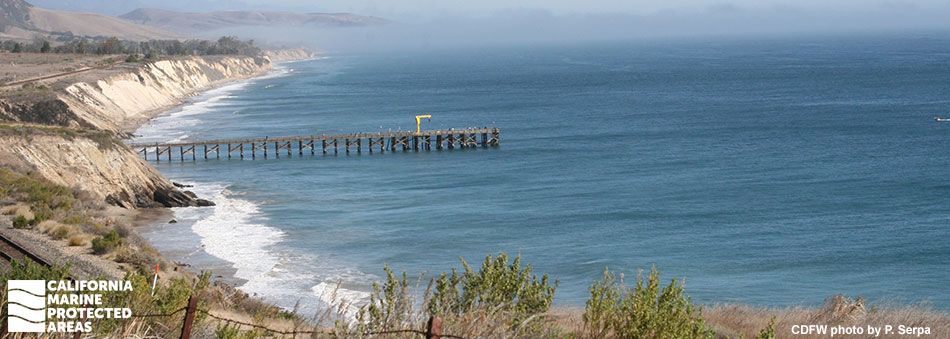
Overview
Kashtayit State Marine Conservation Area (SMCA) is a two-square-mile marine protected area (MPA) located just off Gaviota State Park, 30 miles west of Santa Barbara and 13 miles east of Point Conception. Set aside because of its cultural significance to Chumash peoples, this undeveloped area is a favorite for beachgoers, anglers, surfers, scuba and free divers, kayakers, and wildlife enthusiasts.
This MPA sits along Southern California’s largest stretch of undeveloped coastline, a 76-mile swath between Gaviota State Park in the south and Oceano to the north. Kashtayit SMCA is home to an array of marine life including rocky reef fishes, flatfish, sharks, birds, marine mammals, and invertebrates. It encompasses beaches, rocky shores, an expanse of surfgrass, sandy seafloor habitat, and a few offshore reefs. Located just off Highway 1, this MPA is easily accessible to anyone interested in exploring coastal California.
Regulations
It is unlawful to injure, damage, take, or possess any living, geological, or cultural marine resource, EXCEPT:
Recreational take of finfish, giant kelp by hand, and invertebrates except rock scallops and mussels is allowed. Includes take exemptions for the following tribe:
- Santa Ynez Band of Chumash Indians
California Code of Regulations Title 14, Section 632(b)(97)(opens in new tab)
Quick Facts
MPA size: 2.02 square miles
Shoreline span: 1.9 miles
Depth range: 0 to 160 feet
Habitat composition*:
- Rock: 0.44 miles
- Sand/mud: 1.39 square miles
*Habitat calculations are based on three-dimensional area and may exceed the total MPA area listed above.